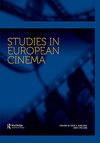Italian Neorealist and New Migrant films as dispositifs of alterity: How borgatari and popolane challenge the stereotypes of nationhood and womanhood?
IF 0.2
0 FILM, RADIO, TELEVISION
引用次数: 1
Abstract
ABSTRACT The article explores the place of women and migrants in Italian Neorealist and New Migrant cinema, arguing that New Migrant cinema continues and reworks key Neorealist tropes and tendencies. It intends to render explicit how an ensemble of films challenge the stereotypes concerning gender, national and cultural identities. Among the figures that are scrutinized are the borgatari, extracomunitari, popolane and terrone. Its main objective is to demonstrate how the cinematic expression of these figures in Italian Neorealist and New Migrant cinema enhanced the reinvention of italianità and the generalised understanding of gender. It also aims to explain why the cross-fertilisation between migration studies, urban studies and gender studies is indispensable for comprehending this reinvention. Particular emphasis is placed on the shared interest of Roberto Rossellini’s Roma città aperta and Vittorio De Sica’s Il tetto in the plight over housing and the special character of the urban landscape of Rome. The article also sheds light on certain common concerns of Italian Neorealist and New Migrant cinema, especially as far as national and gender narratives are concerned. Pivotal for the reflections developed here are the roles of Anna Magnani in Roberto Rossellini’s Roma città aperta, Luchino Visconti’s Bellissima and Pier Paolo Pasolini’s Mamma Roma.意大利新现实主义和新移民电影作为另类的配置:布尔塔利和平民如何挑战国家和女性的刻板印象?
摘要本文探讨了女性和移民在意大利新现实主义和新移民电影中的地位,认为新移民电影延续并改写了新现实主义的主要比喻和趋势。它打算明确一系列电影如何挑战关于性别、民族和文化身份的陈规定型观念。被仔细审查的数字包括borgatari、extromunitari、popolane和terrone。其主要目的是展示这些人物在意大利新现实主义和新移民电影中的电影表达如何促进对意大利的重塑和对性别的普遍理解。它还旨在解释为什么移民研究、城市研究和性别研究之间的交叉融合对于理解这种重塑是必不可少的。特别强调罗伯托·罗塞里尼(Roberto Rossellini)的《罗马城》(Roma cittàaperta)和维托里奥·德·西卡(Vittorio De Sica)的《Il tetto》对住房困境和罗马城市景观的特殊性的共同兴趣。这篇文章还揭示了意大利新现实主义和新移民电影的一些共同关注点,特别是在民族和性别叙事方面。Anna Magnani在Roberto Rossellini的《Roma cittàaperta》、Luchino Visconti的《Bellissima》和Pier Paolo Pasolini的《Mamma Roma》中的角色是反思的核心。
本文章由计算机程序翻译,如有差异,请以英文原文为准。
求助全文
约1分钟内获得全文
求助全文

 求助内容:
求助内容: 应助结果提醒方式:
应助结果提醒方式:


